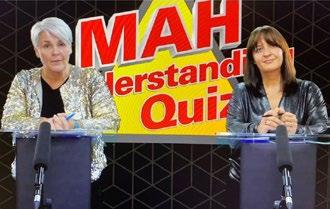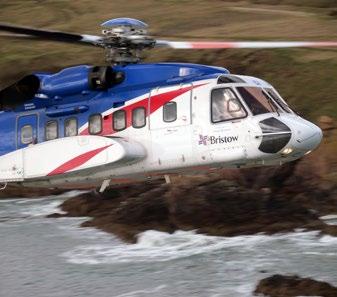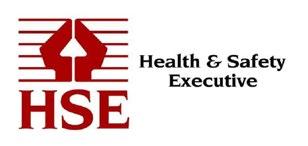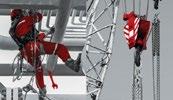WELCOME MESSAGE FROM THE WEST TEAM
Happy New Year and welcome back to Tea Shack News Rebooted! Written by members of the workforce to cover industry news, safety advice and the thoughts of those working in the offshore energy industry, we look forward to bringing the quarterly publication back to life and back in front of those who make the energy industry tick.
This magazine is championed by the Step Change in Safety Workforce Engagement Support Team (WEST), whose purpose is to support the workforce through proactive engagement to improve safety for our industry.
Tea Shack News is the opportunity to have your voice shared with the wider industry so whether you are part of the workforce, leadership, member companies, Unions or the HSE, we want to hear from you!

Every quarter we will cover:
You will see our new industry characters who will become familiar faces in the coming editions, but we need you. If you have any ideas or stories you’d like to share with the rest of the industry, please get in touch with editor@teashack.news and we will consider them for future issues.
We hope you enjoy the 1st TSN Rebooted Edition and look forward to highlighting the news that matters to you. Sit back, grab a cuppa & take a minute…

Thank you for continuing to ‘Play Your Part’ – The Step Change in Safety Workforce Engagement Support Team (WEST)

REBOOTED WEST
IN MEMORY OF JIM TRODDEN
1954 - 2022
We received the sad news that Jim Trodden, the unmistakably recognisable voice of Step Change in Safety, passed away on the 11th of November 2022. Jim was a larger-than-life character who displayed and shared an unwavering commitment to safety during his long career in our industry. From his colleagues at Chevron, his friends at Step Change in Safety and beyond, to the family he admired and loved dearly - Jim will be missed by so many.
Step Change Executive Director Steve Rae and a friend of Jim, spoke with George Whitten, former supervisor and colleague of Jim’s at Chevron:
George says, “Jim had a degree in fine arts, and came to Chevron from BP Grangemouth around 1989 - 1990.
IN MEMORY OF JIM TRODDEN
CONTINUED
I was Jim’s first supervisor on Ninian Central red crew. We were later assigned to the onshore review team for most of 1996 and then Jim moved to the Britannia project where he became operations team leader.
I think Jim took an assignment to Tengize (Kazakhstan) around 2000 - 2001 and made some very strong connections with the locals, returning to the North Sea just after the Texaco Chevron merger where he gained the position of OIM on the Captain FPSO.
I found Jim to be quite a private person who had a great interest in workplace safety. He had a great wealth of on-the-job experience and was not afraid to speak up. When he was a shift operator, and when he progressed into supervision and management, he was influential in changing behaviours and safe working practices with his past experience and strong personality.
I know he had a lot to do with Step Change quite early on and was instrumental in implementing a lot of their processes and procedures within the Chevron operation.
In conclusion, he was quite a character. Very articulate and an inspirational talker, who could take the most complex situation and boil it down to simple layman’s terms and still get the message across.
He once said to me, he always hoped to leave a situation better than he found it……I think he did.”
This short video pays tribute to Jim, who will be remembered for playing his part, click the link if viewing online:
YouTube link
Or scan the QR code:


THE MAH UNDERSTANDING QUIZ RETURNS ON FRIDAY 24TH MARCH!


One of the most hotly anticipated virtual quizzes returns to your screens this March.
The Major Accident Hazard Understanding Quiz takes place via Zoom on Friday 24th March Grab some teammates and get set to test your knowledge.
Our last MAH Quiz gathered 17 teams on screen last October for an evening of fun… and fundraising! Winners receive a share of £1,500 for their chosen charity.
Be part of our fun, free-to-enter Friday quiz and benefit a charity of your choice. Register your team today via the QR Code. May the best team win!
Questions were asked and answers put into the Kahoot quiz app, easy apart from we were against the clock…Don’t Panic…
“We entered a team (EVERBEST from North Everest) into the MAH Understanding quiz. We had no idea what format it would take but had one aim – not to finish last!
At 20:00 the zoom connection sprang into life and we were greeted by the 3 Gillians (one remained off camera). It was clear from the start that this was going to be an entertaining night.
The 17 teams, from different platforms, battled to get onto the leaderboard. Stress levels/heart rates went through the roof as we made it into second place.
It turned out to be a memorable Friday night. Would we recommend the quiz to others – we already have. Thanks to everyone who organised and took part making it a brilliant night.”
Jon Metcalfe Lead Operations Technician, North Everest Platform, Harbour EnergyTHE ANNUAL MAH UNDERSTANDING QUIZ IS GREAT FUN, BUT DON’T TAKE OUR WORD FOR IT!
How many of us run through that checklist, perhaps unconsciously, every time we leave the house?
Probably most of us because phones – and tablets and laptops – are an increasingly important part of life. These powerful tools are used for everything from finding directions to ordering groceries. And even, occasionally, as phones…
KEYS … WALLET
battery may not be something we have seen for ourselves, it can and does happen. So it’s essential everyone on board an aircraft takes some simple and straightforward precautions.
Louise explains: “When a lithium battery goes wrong, or is damaged, it can enter a state called thermal runaway. This chemical chain reaction sees it rapidly become hotter and hotter, possibly leading to an explosion or a sudden and very intense fire.

PHONE
Phones are useful for passengers waiting for a flight, so, if the client the flight is operating for approves it, then they are one PED that does not always need to go in hold baggage. However they must be fully switched off for the duration of the flight.
Potentially, yes they are. In fact the CAA, in common with other aviation regulators across the globe, considers phones and other Portable Electronic Devices (PEDs) to be one of the top risks to aviation today.

Louise Hall, who runs Bristow Ground Operations in Aberdeen, explains: “It’s not the devices themselves that pose the safety issue, it’s the lithium batteries inside them.

“The fact is that most devices will last their entire lifespan without any problems. But when lithium batteries go wrong, they can do so in a dramatic and even dangerous way.”
A quick google will show why these batteries can pose a genuine risk to aviation. There are plenty of videos online showing how they can burst into flame. And while a malfunctioning
“Now consider if this happened in the hold of a helicopter, where there is no way of fighting a fire. The crew would have to make an emergency landing –and this might very possibly be on the water.
“No-one wants this to happen, so Bristow, in common with all other offshore helicopter operators, asks passengers to follow two really simple, but incredibly important, rules when it comes to PEDs in baggage on helicopters.”
1 Switch it off. Fully off. So not in sleep mode or on standby. A security officer will check the status of a PED ahead of a flight for assurance it is completely off.

2 Protect it from damage. Put it in a carry case or a protective cover – Security can provide bubble wrap to help if necessary.
But it’s not just phones and laptops that could pose an issue. PEDs are constantly evolving and changing and today heliport security teams can encounter a bewildering array of new devices –from wireless earphones to heated hats and self-tying trainers.
“If the device can be switched off then it can usually be carried in baggage,” said Louise. “However some companies have stricter rules than others – around powerbanks for example – and sometimes we do have to say no. Ear pods that are carried in a charging case, for example, can’t always be switched off, if so then they can’t be carried.
“In line with other helicopter operators Bristow allows a maximum of six PEDs per passenger. Please help us keep your flights safe by following your company’s rules and the guidance of the heliport security staff.”
But are they powerful enough to bring down a helicopter?
ON82
GUIDANCE ON THE PROVISION OF ACCOMMODATION ON OFFSHORE INSTALLATIONS
Tea Shack News spent time with the HSE to find out more about the recently revised ON82 – Guidance on the provision of accommodation on offshore installations – and accommodation updates to “2 + 1”.
2+1 is an industry term to describe when a cabin is allocated to a maximum of three people, based on two people working days, with the third person working nights.
The updated ON82 (Rev 3) which was published in August 2022, shows continuous improvement in accommodation standards on offshore installations and has been updated to strengthen and improve the health and welfare of the workforce.
Key points from the revised ON82 include:
• The HSE will not accept any safety cases for new installations requesting 2+1 cabins

• 2+1 cabins can only be used on a temporary basis and will detail start and finish dates
• Duty Holders should provide justification for any critical/exceptional circumstances to move to 2+1 cabins as part of a material change notification
• If 2+1 is in an accepted safety case, then the Duty Holder should produce a welfare impact assessment for each temporary use.
A welfare impact assessment should be a consultative process with the workforce and be created in connection with safety reps and the operator.
2+1 cabins are not to be used for normal operating parameters and be in line with any identified critical or exceptional circumstances, eg short duration projects, shutdowns, turnarounds (TARs) and other critical maintenance, but it should not be the norm.
Companies should strive towards minimising these cabin arrangements as much as possible. An inspection can be requested at any time and the Duty Holder will be required to share the welfare impact assessment with the HSE through a focal point inspector.
Read the full guidance issued by the Offshore Major Accident Regulator (OMAR) and find out more at https:// www.hse.gov.uk/omar/assets/docs/ operations-notice-82-accommodation. pdf
FUTURE EVENTS
Communication, collaboration and learning all help to improve safety. The events that Step Change in Safety delivers play a vital role in achieving this.
Through a series of events, forums and webinars, Step Change in Safety provides a platform for networking, learning, and sharing knowledge about safety in the offshore energy industry. These events allow the workforce to play their part in improving safety by exchanging ideas and voicing concerns on issues that affect the whole industry.
Email: editor@teashack.news www.stepchangeinsafety.net/teashack-news #playyourpart
BECOMING AN ELECTED SAFETY REP A PERSONAL PERSPECTIVE

 BY JAMIE GORDON
BY JAMIE GORDON
Hi, I’m Jamie Gordon, I’m an elected safety rep onboard the CPC1 in the Morecambe Bay offshore gas field.


I have been a safety rep for almost a year and am becoming more and more involved in weekly safety meetings, awareness and promoting a positive safety culture.
I have worked on the CPC1 for around 6 years and decided to apply to become a safety rep at the start of 2022. I wanted to apply to be a rep as I was keen to become more involved on my platform and voice my ideas on how I believe things can be improved and how participation towards a positive safety society offshore can be attained.
In my role as a helideck steward, I believed I could be a fresh set of eyes and bring forward new ideas that other people may have overlooked. When I applied there were no current safety reps within my role or working as part of the helideck crew. From this, I saw an opportunity to put myself forward

to better myself and to have part of the safety team in those areas such as the helideck and galley/catering zones.
The most rewarding and satisfying work I have done since being elected was being involved in the decisionmaking and delivery of new rules and guidance during the covid pandemic offshore. This included such things as one-way systems around tea points and seating arrangements during mealtimes. Through meetings with the onshore team and Offshore Energies UK, we put together presentations to deliver to the offshore population. I felt heavily involved in this and an important member of the team.
Despite being the most rewarding aspect of my new role, this also was the most challenging part to date. Many people had their own thoughts and concerns about covid, which was something none of us had experienced before. Throughout introducing new rules and procedures, I thought the whole platform came together and
worked to overcome any difficulties.
I am lucky to have great colleagues working alongside me so that I can balance my day job with my role as a safety rep. I am given ample time to attend meetings and perform any duties I have as a rep with no pressure to complete outstanding day job tasks. Communicating with my constituents can be different to other offshore platforms as some of my members speak to other reps in a similar job role to themselves. I communicate with and update other members I work alongside daily during our meetings.
I do my best to interact and liaise with other constituents as much as I can during my trips, and I make myself approachable and available for any concerns they may have.
If I knew someone who was thinking of becoming a safety rep, I would highly encourage them to pursue it. I have never looked back, and this new venture has opened my eyes to a new side of the offshore working community. On the CPC1 shortly after completing the Introductory Safety Rep course in Hull, I spoke with a fellow employee who was considering applying to become a rep. After telling him my own story of being elected and about the training involved, he has since joined the safety rep team and completed the training.
In the future, I will continue to promote the benefits and opportunities of becoming a safety rep to the best of my ability.
“I would highly encourage anyone to become a safety rep”
OIL AND GAS WORKERS ENCOURAGED TO ‘OWN’
THEIR SKILLS THROUGH CONNECTED COMPETENCE
Workers in the oil and gas industry are more than aware of the multitude of risks and hazards that surround them in their everyday work. They are also very much aware that while employers have a duty of care towards their employees, by providing the correct training, equipment, and safety protection, the onus is also on each one of them to ensure that they are operating in the safest possible way at all times.
Over the past few months, Connected Competence has been supporting Step Change in Safety in its focus on the Prevention of Personal Injury. It has been acknowledged that while other hazardous industries, such as aviation, provide regular, ongoing personal development training as often as every six months, there has, until now, been no such standard in oil and gas.
Connected Competence is an industryled endorsement which has been designed to help workers fulfil and maintain their duty of care by ensuring

that they are able to demonstrate ongoing base technical competence for site-based activities. It also gives the worker ownership of their skills and allows potential employers to see that their technical skills are current and up to date, speeding up mobilisation for jobs.
By refreshing base technical competence every three to four years (depending on the discipline) through a series of technical tests, it can be guaranteed that everyone is working to the same recognised base standard needed for today’s working environments. The bottom line is that it avoids skills becoming rusty, reducing the risk to both workers and their colleagues.
To find out more about Connected Competence, and how you can demonstrate your ongoing technical competence, visit www.connectedcompetence.co.uk
By Fiona FitzGerald, Evolve Consulting ScotlandMAJOR ACCIDENT HAZARDS, COMPETENCE WITHIN THE UK ENERGY INDUSTRY, AND THE VALIDITY OF COMPETENCE ASSESSMENT PRACTICES.
A competent workforce is required for compliance with legislation and to increase the resilience of an organisation. Such a workforce is also essential to provide an effective response to major accidents offshore.
Step Change in Safety has published the guidance document ‘Competence Management Framework Guidance Document’ which addresses the requirements of an effective competence management system (CMS).
One of these requirements concerns system validity (not the same as system verification). Two fundamental questions associated with validity are:
• ‘to what extent is the training and/ or assessment practice actually measuring that which it claims to measure?’ and,
• ‘is the competence training and/or assessment practice delivering what is required to manage the identified risk(s) and being taught and assessed such that there is effective learning and assessment?’
All Duty Holders and employers, need to ensure that they, and the resources available to them, are not unquestioningly seeking compliance with goal setting legislation by the creation of increasingly complex competence management schemes at the expense of addressing these fundamental questions.
In summary, an effective CMS needs validation of its training and assessment practices. Without this validation, the CMS (including its audit and verification practices) becomes no more than an ineffective and passive administration system.
It is so important to listen to the pre-flight safety briefing so that it remains fresh.
Three little words that no-one wants to hear. To hear them means something has gone wrong. Badly wrong.
If the worst happens, and the aircraft you’re flying in becomes involved in an emergency situation, how confident are you that you would know what to do?

You might start checking that your seatbelt is securely fastened. On a chopper flight, you would almost certainly ensure your pop stud is fully secured – the button that, when donning your survival suit, seems like such a nuisance. You might start thinking back to your flight safety briefing – is the lifejacket inflated inside or outside the aircraft?
Thankfully major events are rare, primarily due to the strict controls put in place to improve flight safety. The airline industry has invested heavily in safety systems and human factors, with the result that it is the safest form of transport today.
When required, emergency procedures kick in: communication with air traffic control, competent pilots knowing how to safely land the aircraft and more. And passengers must also play their part and follow crew instructions. Whilst aircraft incidents are few in number, a pattern is emerging where evacuation is being delayed by passengers not following crew instructions. In a panic, passengers’ logical decision-making capability is reduced.
Just one reason why it is so important to listen to the preflight safety briefing so that it remains fresh. Some frequent flyers tend to “zone out” but it’s worth giving it a few minutes of your attention.
It’s the same offshore. We live and work on an asset that operates as a heliport, harbour, power station, hydrocarbon plant, hotel…all at the same time. When the GPA goes off, it starts a whole series of events including emergency shutdown; assembly of emergency response teams; and other personnel going to muster. Rest assured that the team is ready to deal with the scenario.
Meanwhile, play your part by following instructions and giving your full attention to all safety briefings.
A short survey on social media revealed you wanted Sudoku and General knowledge as your regular quiz.
Keep your brain active with your own Sudoku quiz or grab a colleague or two and test your wits against each other in the general knowledge quiz. Over to you!
SUDOKU
Insert the numbers one to nine into the grid in such a way that every number appears once in each horizontal line, vertical line, and square.
GENERAL KNOWLEDGE QUIZ
1. What colour are the seats in the House of Commons?
2. What colour is found on 75% of the world’s flags?
3. Which film was the first to be recognised as part of the Marvel Cinematic Universe?
4. What is the name of Wendy’s dog in Peter Pan?
5. What year was Heinz established?
6. Which seaside is home to the longest pier in the UK?
7. What year did Elvis die?
8. The song ‘How Far I’ll Go’ features in which Disney film?
9. What is Queen Elizabeth II’s surname?
10. Which new British military force was established in 1918?
11. In which English seaside town was ‘Fawlty Towers’ set?
12. Who discovered Penicillin?
13. What is Keir Starmer’s constituency?
14. How many times has Katie Price been married?
15. What is the name of Boris Johnson’s newborn son?
16. What is the most spoken language in the world?
17. What is the name of the headteacher in Roald Dahl’s Matilda?
18. In what year was the Chernobyl disaster?
FEEDBACK & SUGGESTIONS
What can we do to continuously improve Tea Shack News? We want to hear from you!
Whether you have ideas for future articles which you think would be of interest to the workforce or want to shine a light on a specific matter which is relevant to your working day/shift or trip, we would love to hear from you. This is a publication created for you, so let us know what works and what doesn’t!
19. In tennis, what piece of fruit is found at the top of the men’s Wimbledon trophy?
20. Who was the first female Prime Minister of Australia?
Answers to the general knowledge quiz can be found scanning this QR code: No cheating!

Got any interesting ideas or stories you’d like to share with the rest of industry?
Anyone you’d like to recognise for being a safety champion?
Please get in touch with editor@teashack.news and we will consider it for future issues. We would also love to hear what you think about Issue 1 of Tea Shack News Rebooted; all constructive feedback is welcome!
We asked, you voted, and we listened!
